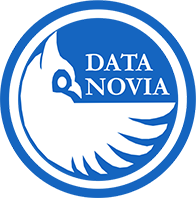Introduction
In the world of data science, both Python and R offer powerful tools and libraries to manage the entire analytical process—from data import and cleaning to modeling and visualization. However, each language has its unique strengths and workflow nuances. In this tutorial, we compare typical data science workflows in Python and R, highlighting the advantages and challenges of each approach. By understanding these differences, you can choose the right toolset for your project or even integrate the strengths of both languages.
Overview of Data Science Workflows
Data science workflows generally follow these key steps:
- Data Import and Cleaning:
Loading raw data from various sources and transforming it into a usable format. - Data Exploration and Visualization:
Understanding the data through summary statistics and visual representations. - Modeling and Analysis:
Building predictive or explanatory models using statistical or machine learning techniques. - Reporting and Deployment:
Communicating findings through reports or deploying models into production.
Both Python and R follow these steps, but the tools and syntax differ.
Python Workflow
Data Import and Cleaning
Libraries:
Use pandas for importing CSV, Excel, or SQL data.Example:
import pandas as pd data = pd.read_csv("data.csv") data_clean = data.dropna()
Data Exploration and Visualization
Visualization Tools:
Matplotlib, Seaborn, or Plotly.Example:
import matplotlib.pyplot as plt import seaborn as sns sns.histplot(data_clean['variable']) plt.show()
Modeling and Analysis
Libraries:
scikit-learn for machine learning, statsmodels for statistical modeling.Example:
from sklearn.linear_model import LinearRegression model = LinearRegression().fit(data_clean[['feature']], data_clean['target'])
Reporting and Deployment
- Tools:
Jupyter Notebooks for interactive analysis and Flask or FastAPI for deploying models.
R Workflow
Data Import and Cleaning
Libraries:
Use readr or data.table for data import and dplyr for cleaning.Example:
library(readr) library(dplyr) data <- read_csv("data.csv") data_clean <- data %>% drop_na()
Data Exploration and Visualization
Visualization Tools:
ggplot2 for static plots or Shiny for interactive dashboards.Example:
library(ggplot2) ggplot(data_clean, aes(x = variable)) + geom_histogram() + theme_minimal()
Modeling and Analysis
Libraries:
Use lm() for linear models, glm() for generalized linear models, or tidymodels for machine learning.Example:
model <- lm(target ~ feature, data = data_clean) summary(model)
Reporting and Deployment
- Tools:
RMarkdown or Quarto for dynamic reports and Shiny for interactive applications.
Comparative Analysis
Advantages of Python:
- Versatility:
Extensive libraries for machine learning (scikit-learn, TensorFlow) and general-purpose programming. - Interactivity:
Jupyter Notebooks provide a highly interactive environment.
Advantages of R:
- Statistical Rigor:
Strong statistical modeling capabilities and advanced visualization with ggplot2. - Reproducibility:
Tools like RMarkdown ensure reproducible research with dynamic reports.
When to Choose Which:
- Python may be preferable for projects requiring robust machine learning, deep learning, or integration with web services.
- R is often favored for statistical analysis, visualization, and projects emphasizing reproducible research.
Conclusion
Both Python and R offer robust workflows for data science. The choice between them often depends on the specific requirements of your project and your familiarity with the language. By comparing these workflows, you can leverage the strengths of each tool or even combine them for a more powerful, hybrid approach.
Further Reading
Happy coding, and may your data science workflows be both efficient and insightful!
Explore More Articles
Here are more articles from the same category to help you dive deeper into the topic.
Reuse
Citation
@online{kassambara2024,
author = {Kassambara, Alboukadel},
title = {Data {Science} {Workflow:} {Python} Vs. {R}},
date = {2024-02-12},
url = {https://www.datanovia.com/learn/programming/cross-programming/data-science-workflow-python-vs-r.html},
langid = {en}
}
